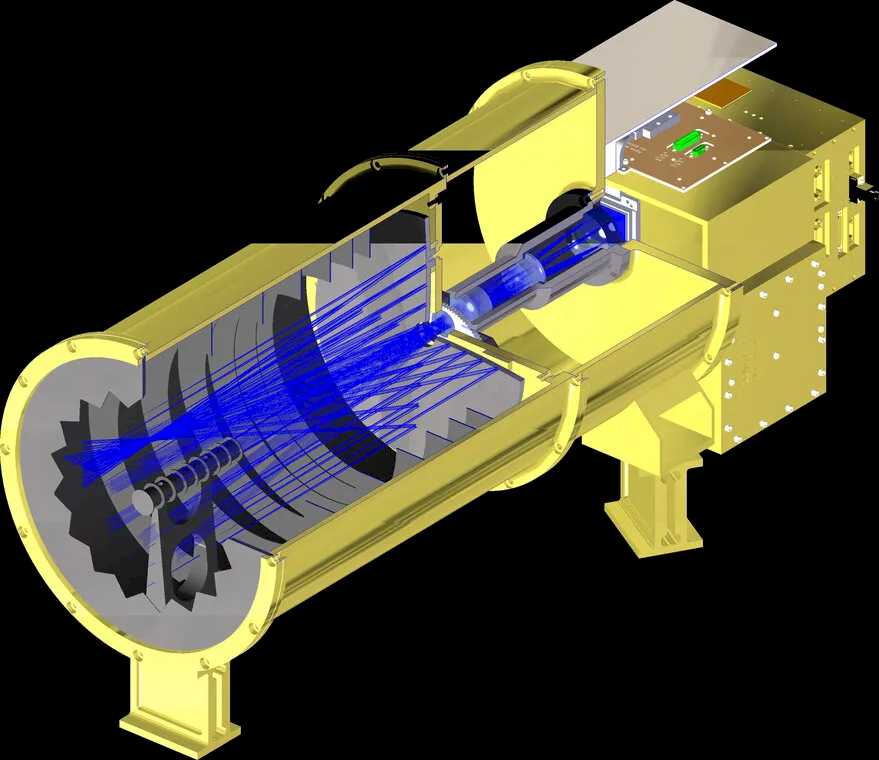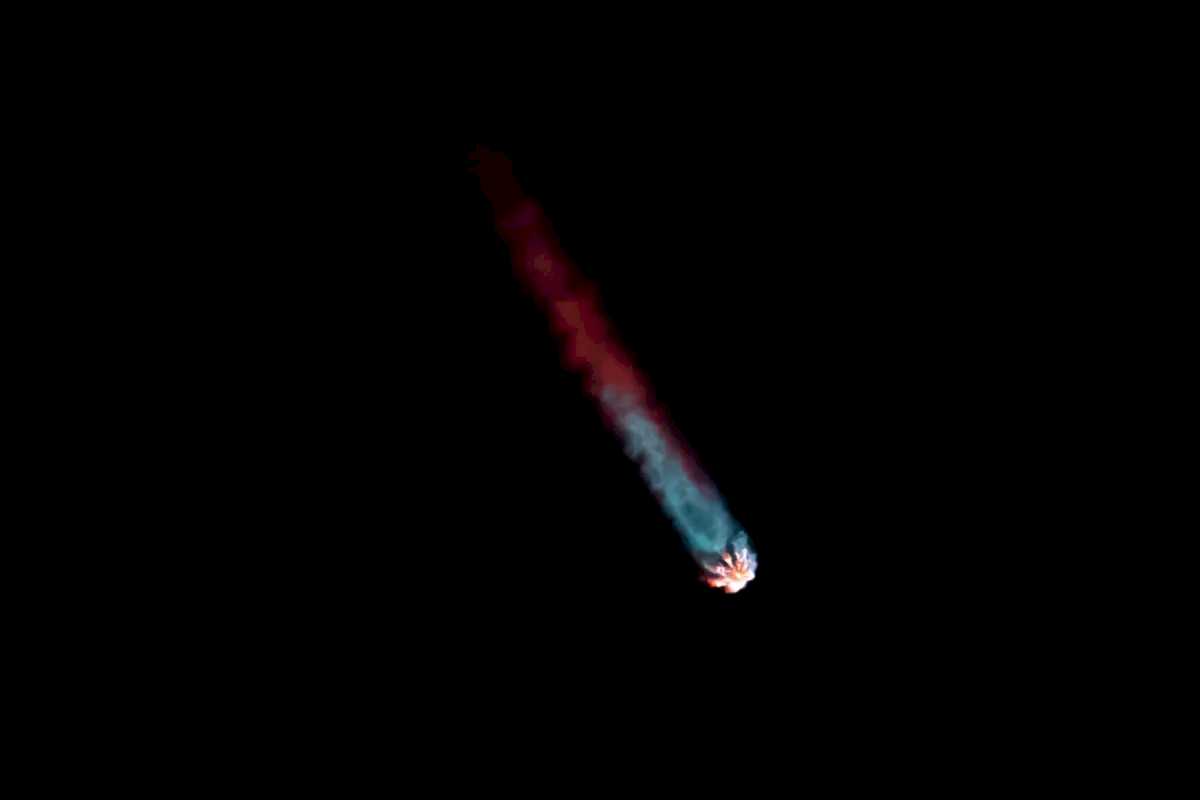Space Development Agency satellite procurements moving forward amid heightened scrutiny .
https://spacenews.com/space-development-agency-satellite-procurements-moving-forward-amid-heightened-scrutiny/
View 399 times
Space Force to play ‘central role’ in Iron Dome U.S. missile defense initiative .
https://spacenews.com/space-force-to-play-central-role-in-iron-dome-u-s-missile-defense-initiative/
View 390 times
K2 Space raises $110 million to scale up satellite production.
K2 Space, a satellite manufacturing startup aiming to disrupt the industry with lower-cost, high-capacity spacecraft, has raised $110 million in a Series B funding round co-led by Lightspeed Venture Partners and Altimeter Capital.
The round, announced on Feb. 13, also saw participation from existing investors, including Alpine Space Ventures and First Round Capital, bringing the California-based company’s total equity raised to $180 million since its founding in 2022.
The fresh capital injection will help K2 Space accelerate production of its “Mega” class satellite buses that the company claims can be built for under $15 million per unit with lead times of less than three months. K2 Space and its investors are betting that as launch costs continue to decline, the industry will move toward larger satellites, countering the recent trend favoring small satellite constellations.
“Advanced space capabilities can’t be built on small, low-powered platforms,” said Karan Kunjur, CEO of K2 Space, “but higher capability satellites have been far too expensive for most proliferated applications.”
Military mission planned for 2026
The U.S. Space Force is already showing interest. K2 Space is developing its first government mission, dubbed Gravitas, under a $60 million Strategic Funding Increase (STRATFI) agreement, with the Space Force and venture investors each contributing $30 million. The mission, scheduled to launch on SpaceX’s Transporter-16 rideshare in 2026, will deploy multiple national security payloads in low Earth orbit before maneuvering into medium Earth orbit, a region requiring advanced radiation-hardened capabilities.
Beyond funding, K2 Space is expanding its physical footprint. The company announced plans to open a 180,000-square-foot factory in Torrance, California, a move aimed at scaling production, increasing in-house component manufacturing, and growing its workforce.
In a bid to strengthen its defense business, K2 Space hired former Assistant Secretary of Defense for Space Policy John Plumb as its new head of strategy.

View 429 times
Blue Ghost 1 enters lunar orbit as Resilience flies by the moon.
WASHINGTON — One commercial lunar lander has entered orbit around the moon while another, launched at the same time, has performed a lunar flyby to set up a later return.
Firefly Aerospace confirmed Feb. 13 that its Blue Ghost 1 lander entered orbit around the moon, performing a 4-minutes, 15-second burn of its reaction control system thrusters starting at 8:51 p.m. Eastern.
The company did not disclose specifics about the orbit but amateur trackers, monitoring its radio signals, estimated that the spacecraft is in an orbit between 150 and 5,673 kilometers above the moon. Firefly said the lander will perform additional maneuvers to move into a circular orbit to prepare for its landing attempt.
That landing is scheduled for 3:45 a.m. Eastern March 2, the company and NASA announced Feb. 14. Blue Ghost 1 is carrying 10 NASA payloads through the agency’s Commercial Lunar Payload Services (CLPS) program intended to operate at the landing site near Mare Crisium through the end of the lunar day and several hours after sunset.
Blue Ghost 1 launched Jan. 15 on a Falcon 9, sharing the launch with the Resilience lunar lander from Japanese company ispace. Resilience, the company’s second lander mission, performed a lunar flyby Feb. 14, passing about 8,400 kilometers from the lunar surface at 5:43 p.m. Eastern.
Resilience is following a low-energy trajectory to the moon, one that will take is as far as 1.1 million kilometers from Earth before returning in early May to perform a lunar orbit insertion burn. That will be followed by a landing attempt in the Mare Frigoris region of the moon, although ispace has not disclosed a planned landing date.
“I feel very confident about the Resilience lander, which has steadily achieved milestones and is on track for success, and our employees who have made meticulous preparations for this impressive flyby of the moon,” Takeshi Hakamada, founder and chief executive of ispace, said in a statement.
Both Firefly Aerospace and ispace have outlined milestones and success criteria for their lander mission. For Firefly, achieving lunar orbital insertion was the 10th of 17 milestones from launch to operations of the lander after sunset on the lunar surface. The lunar flyby by Resilience was the fifth of 10 milestones for ispace, from pre-launch preparations to establishing a “steady system state” after landing.
Blue Ghost 1 could end up operating on the lunar surface at the same time as another commercial lander. Intuitive Machines is preparing for a Feb. 26 launch of its IM-2 lunar lander mission at the beginning of a window that runs for four days. IM-2, like the company’s IM-1 lander mission a year ago, is taking more direct route to the moon. Steve Altemus, chief executive of Intuitive Machines, told CNBC Feb. 7 that a launch any day in the window would set up a landing in the Mons Mouton region near the south pole the moon on March 6.

View 424 times
Trump taps former Space Force commander for senior Air Force post
Matthew Lohmeier, a former Space Force commander who was removed from his post over his public criticism of military diversity initiatives, is Trump’s pick to be undersecretary of the Air Force

View 522 times
#Starship upper stage lost on seventh test flight
SpaceX’s seventh Starship/Super Heavy test flight ended prematurely Jan. 16 when the Starship upper stage was apparently lost while ascending into space.
The vehicle lifted off from SpaceX’s Starbase test site at Boca Chica, Texas, at 5:37 p.m. Eastern. The Super Heavy booster ignited its 33 Raptor engines, sending the vehicle into clear skies.
The booster separated about two minutes and 45 seconds after liftoff and headed back towards Starbase. It returned to the launch pad where “chopstick” mechanical arms attached to the sides of the tower caught the booster seven minutes after liftoff, repeating a feat first performed on the vehicle’s fifth flight in October.
While the booster returned, Starship continued to ascend. However, onscreen telemetry showed one of the six Raptor engines on Starship shut down seven minutes and 40 seconds after liftoff, followed by two more engines roughly 20 seconds later. By eight minutes and 25 seconds after liftoff only one Raptor engine was firing, according to the display, and the vehicle’s speed and altitude were no longer updating.
“We had an anomaly with that upper stage,” Dan Huot, one of the hosts of the SpaceX webcast of the launch, said minutes later. “At this point, we are assuming that the ship has been lost.” SpaceX confirmed minutes later that the vehicle had been lost. Video soon appeared on social media showing what may be debris from the vehicle burning up and falling over the Turks and Caicos.
A number of aircraft flying in the vicinity at the time of Starship’s breakup were instructed by flight controllers to go into holding patterns or, in some cases, diverted to other airports to avoid any risk of being struck by falling debris.
“The FAA briefly slowed and diverted aircraft around the area where space vehicle debris was falling,” the Federal Aviation Administration said in a statement. “A Debris Response Area is activated only if the space vehicle experiences an anomaly with debris falling outside of the identified closed aircraft hazard areas.”
The flight was the first of a “block upgrade” for the Starship upper stage. That includes stretching the vehicle by about two meters to a length of 52 meters, accommodating larger propellant tanks that carry 25% more propellant. The vehicle features a “complete redesign” of its avionics with new computers, antennas and power distribution system as well as changes to the forward flaps to reduce heating.
Other changes involve the vehicle’s thermal protection system, with new tiles and a layer underneath that will provide protection in the event of damaged or missing tiles. Some tiles were deliberately removed to stress-test vulnerable areas, while the vehicle intended to some metallic tile options, some incorporating water cooling. Those and other changes are designed to prepare for future flights where SpaceX will attempt to land the Starship upper stage back at the launch site.
SpaceX had planned to perform a Raptor engine relight of Starship while in space and also deploy 10 mass simulators of “V3” versions of Starlink satellites optimized for Starship.
“Preliminary indication is that we had an oxygen/fuel leak in the cavity above the ship engine firewall that was large enough to build pressure in excess of the vent capacity,” SpaceX Chief Executive Elon Musk posted on X, the social media site he also owns. “Apart from obviously double-checking for leaks, we will add fire suppression to that volume and probably increase vent area. Nothing so far suggests pushing next launch past next month.”
That schedule may be overoptimistic. The loss of Starship will likely lead to the FAA mandating a mishap investigation before allowing SpaceX to resume Starship launches. That could delay the next launch by months even though SpaceX has been rapidly producing hardware for future Starship vehicles as the company seeks to scale up launch rates.
SpaceX was planning to soon launch Starships into orbit, rather than on suborbital test flights like this mission. Those future missions would include an in-space propellant transfer demonstration that is a key milestone for development of the Starship lunar lander SpaceX is developing for NASA’s Artemis lunar exploration campaign.
View 506 times
WASHINGTON — The Federal Aviation Administration says it is investigating reports that debris from the failed Starship test flight landed, and caused property damage in, the Turks and Caicos Islands.
In a Jan. 17 statement, the FAA confirmed that it would require SpaceX to perform a mishap investigation for the Starship/Super Heavy test flight the previous day. On that launch, the Starship upper stage broke up late in its ascent.
“The FAA is requiring SpaceX to perform a mishap investigation into the loss of the Starship vehicle during launch operations on Jan. 16,” the agency said. “There are no reports of public injury, and the FAA is working with SpaceX and appropriate authorities to confirm reports of public property damage on Turks and Caicos.”
The FAA did not elaborate on reports of property damage, but there have been online postings of people in the Turks and Caicos finding debris they believed were from Starship. That included the distinctive hexagonal tiles used in the vehicle’s thermal protection system.
“There are no reported injuries and reports of only minimal damage to property at this time,” the National Security Secretariat of the government of the Turks and Caicos Islands said in a Jan. 17 statement. It urged people who found debris to avoid handling it and contact government officials.
“Like many across Turks and Caicos Islands, I shared the concern caused by the outfall of debris and bright colors in the sky yesterday evening,” Dileeni Daniel-Selvaratnam, governor of the islands, a British territory, told a local publication Jan. 17. She said the government was working with the FAA as well as the U.K. Space Agency “to investigate and manage any potential risks.”
The FAA also confirmed in its statement that debris from the incident fell outside of designated areas. “During the event, the FAA activated a Debris Response Area and briefly slowed aircraft outside the area where space vehicle debris was falling or stopped aircraft at their departure location. Several aircraft requested to divert due to low fuel levels while holding outside impacted areas,” the agency stated.
“A Debris Response Area is activated only if the space vehicle experiences an anomaly with debris falling outside of the identified closed aircraft hazard areas,” the FAA added. “It allows the FAA to direct aircraft to exit the area and prevent others from entering.”
According to aviation tracking services, several dozen aircraft altered their flight paths in response to the incident. That ranged from planes going into holding patterns until the airspace was reopened to flights that diverted back to their origin airports or to another airport.
SpaceX, though, stated that debris would not have fallen outside of designated zones. “Starship flew within its designated launch corridor – as all U.S. launches do to safeguard the public both on the ground, on water and in the air,” the company stated on the page devoted to the mission. “Any surviving pieces of debris would have fallen into the designated hazard area.”
The company hasn’t provided additional details on what happened to Starship. #SpaceX stated that during the Starship burn “telemetry was lost with the vehicle after approximately eight and a half minutes of flight. Initial data indicates a fire developed in the aft section of the ship, leading to a rapid unscheduled disassembly.”
“Data review is already underway as we seek out root cause” the company added. “We will conduct a thorough investigation, in coordination with the FAA, and implement corrective actions to make improvements on future Starship flight tests.”

View 486 times
Southwest Research Institute to supply #NOAA #coronagraphs
The San Antonio-based Southwest Research Institute (SwRI) won a $60 million contract to build three coronagraphs for the National Oceanic and Atmospheric Administration.
Under the contract, awarded Nov. 14 by NASA on behalf of NOAA, SwRI will design, develop, build and test coronagraphs for the Lagrange 1 Series project, part of NOAA’s Space Weather Next program. In addition, SwRI will support the launch and provide ground support at NOAA’s Satellite Operations Facility in Suitland, Maryland.
The coronagraphs, like the other Space Weather Next instruments, are designed to gather data for NOAA’s Space Weather Prediction Center, which issues forecasts, alerts and warnings of geomagnetic activity like the May 10 and 11 storms.
The value of the SwRI cost-plus-fixed-fee contract is approximately $60 million, according to a NOAA news release. The contract’s performance period ends in January 2034, after the launch of the second coronagraph. The third coronagraph is a flight spare.
Coronagraphs provide alerts of coronal mass ejections headed for Earth, which can disrupt satellite operations, the terrestrial power grid and telecommunications. Space Weather Next Lagrange 1 is designed to provide continuity for observations of the coronagraph on the Space Weather follow-on Lagrange 1 mission, scheduled for launch in 2025.
NOAA and NASA share responsibilities for the Space Weather Next program. NOAA provides funding and requirements in addition to managing the program and disseminating data. NASA oversees develop and construction of the instruments and spacecraft, while also providing launch services.
SwRI also is building the QuickSounder satellite to house an Advanced Technology Microwave Sounder engineering development unit refurbished by manufacturer Northrop Grumman. QuickSounder is scheduled to launch no earlier than February 2026.

View 499 times
#NOAA sees new applications for commercial weather data , In addition to purchasing global datasets, the National Oceanic and Atmospheric Administration (NOAA) plans to pay a premium for observations of oil spills or other events.
For oil spills, the spot-market approach “is inevitable, but not yet practical,” Steve Volz, assistant administrator for NOAA’s Satellite and Information Service, told SpaceNews at the American Meteorological Society annual meeting here.
To date, NOAA has purchased radio occultation soundings primarily through contracts that give the government free and open access. As a result, NOAA can integrate the commercial observations with government data and share the results widely.
“Introducing restricted data into that trade space would complicate things immensely,” Volz said. “So we are sticking with our full, open approach.”
NOAA officials recognize, though, that the approach may limit the ability of commercial satellite operators to sell data and imagery to other customers.
“Observation satellites are expensive,” Volz said. “How do you monetize that information?”
Spot Market
Going forward, NOAA will continue to acquire global datasets and respond to events by purchasing data on the spot market.
“When we look at these niche market observations, whether it’s fire detection, greenhouse gas measuring or oil spill detection, I don’t need the global perspective,” Volz said. “I want observations over the oil spill.”
Additional datasets may be geographically focused.
“We may buy imagery or microwave data that is applicable for Florida,” Volz said. “I’ll pay premium dollars for it, and you can sell your other data to other people.”
Through its purchases, NOAA would validate and characterize commercial data, potentially enhancing their value for other customers and applications. Showing the commercial data works well in conjunction with government observations, provides additional value, Volz said.
NOAA’s Systems Architecture Engineering Group is working with the agency’s Commercial Data Program to determine how to purchase limited datasets.
Microwave Data
Congress appropriated $27.5 million in the 2024 budget for NOAA commercial weather data purchases. Through that program, NOAA has purchased radio occultation data for numerical weather prediction models and microwave soundings to assess their quality and utility.
Commercial observations also will be purchased in conjunction with Near Earth Orbit Network, or NEON, NOAA’s next generation of polar-orbiting weather satellites.
“We will be looking at buying hyperspectral microwave sounding capability because we see that as very complimentary to being able to meet our mission,” Irene Parker, NOAA National Environmental Satellite, Data and Information Service deputy assistant administrator for systems, said Jan. 13 at the weather conference.
Congress also appropriated about $5 million for NOAA’s purchase of commercial radio occultation data for space weather models.
“Even though we are working with industry to design instruments for Space weather Observations at L1, we are also going to be working with companies to procure radio occultation data to help us in space weather,” Parker said. “We see it as very much a complimentary relationship.”

View 499 times
#SpaceX launches NROL-153, expanding U.S. spy #satellite constellation
The launch marks the seventh deployment in the NRO’s new “proliferated architecture” strategy, which emphasizes smaller, distributed #satellite networks

View 525 times








Space news on Umojja.com